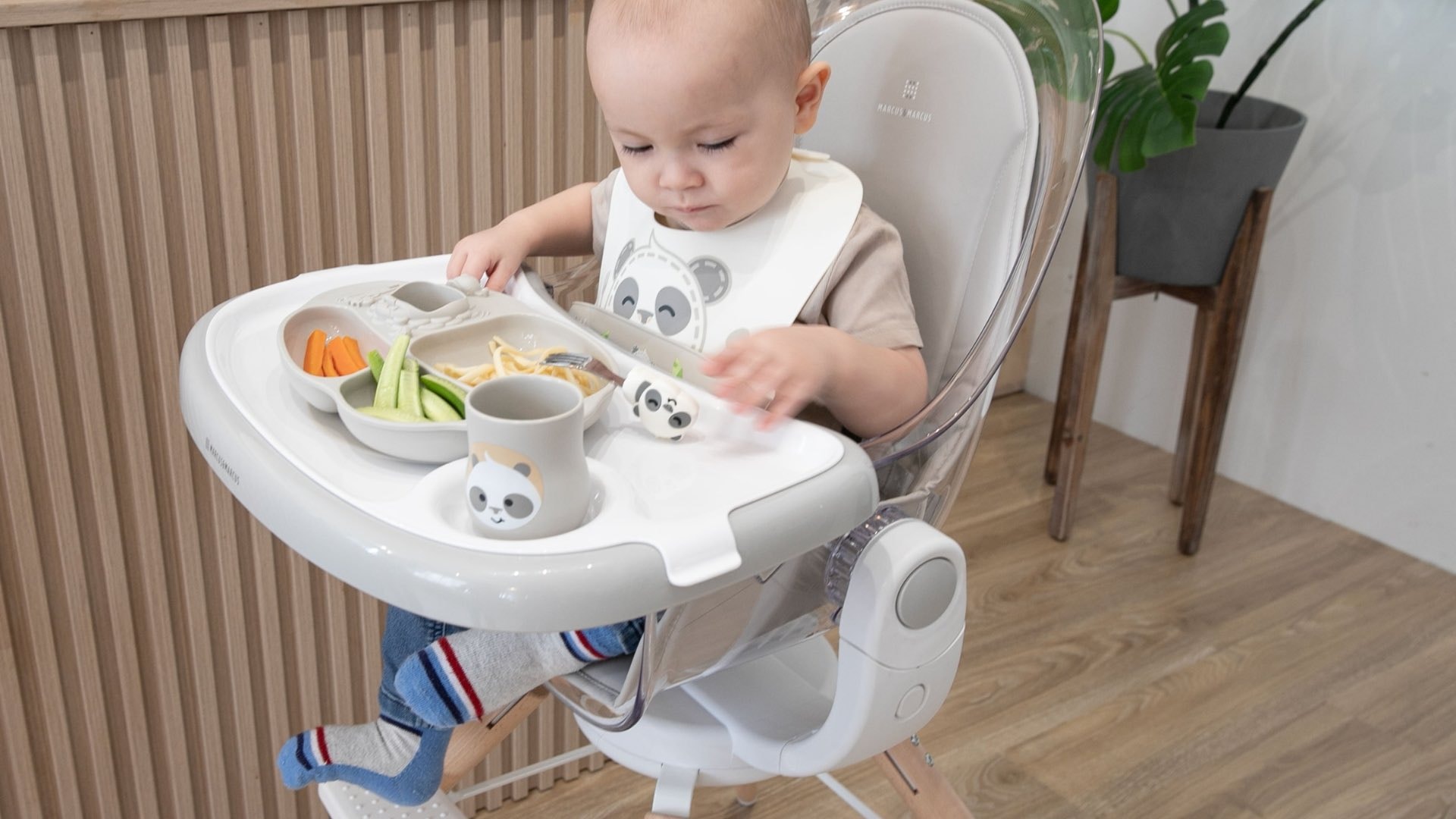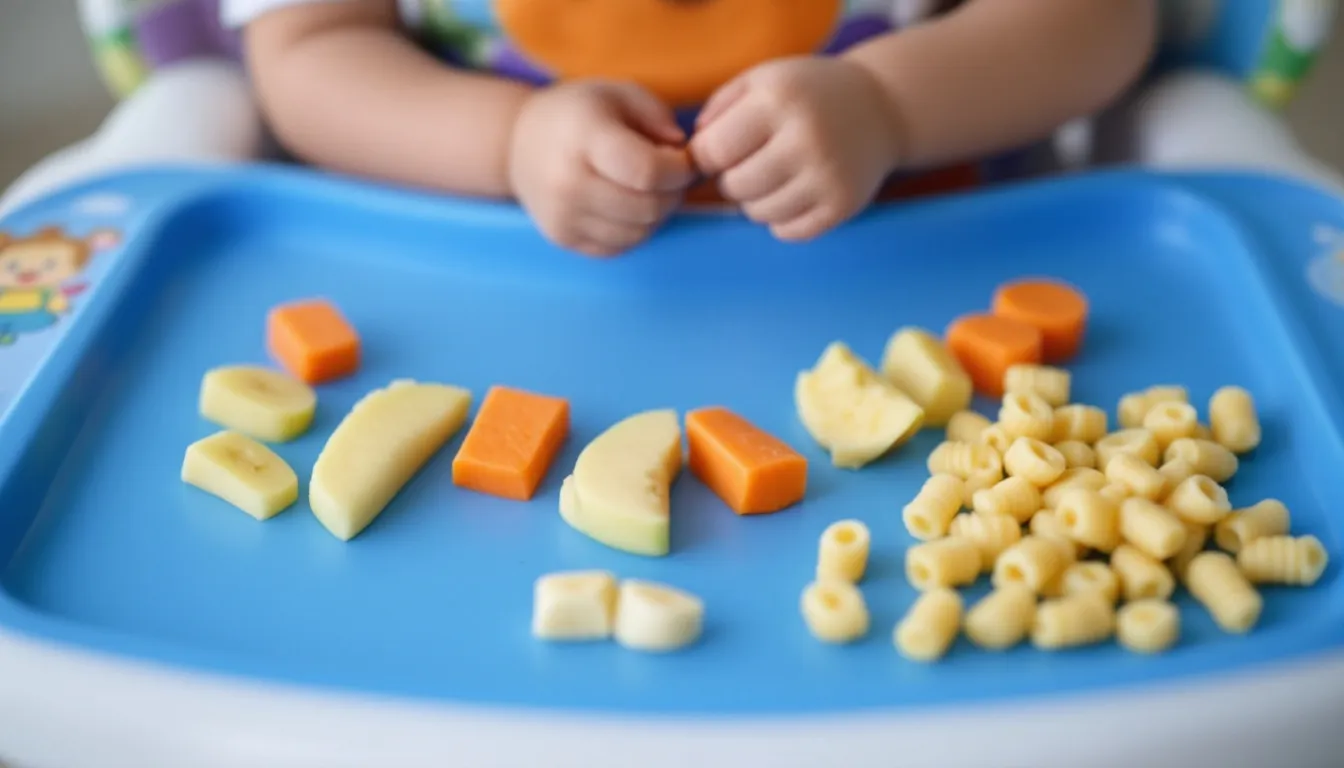When Can Babies Start Baby Led Weaning: Complete Age and Readiness Guide
Wondering when your little one is ready to start baby led weaning? This question often keeps parents up at night as they watch their baby grow and change so quickly. Transitioning from exclusive breast milk or infant formula to solid foods is a big milestone, and getting the timing right is key to keeping your baby safe and happy while supporting their healthy growth and development.
Baby led weaning is an exciting alternative to traditional spoon feeding. It lets babies explore a variety of small, manageable foods and develop self feeding skills right from the start. But unlike the usual pureed foods approach, baby led weaning isn’t just about age — your baby needs to be developmentally ready to take this step safely.
Knowing when to start baby led weaning means understanding both the ideal age and the important readiness signs your baby shows. This guide will walk you through everything you need to know about timing your baby’s introduction to solid foods with the baby led approach, including safety tips and how to avoid foods that could be choking hazards.
Can I do Baby Led Weaning at 4 Months?
It might be tempting to start baby led weaning at 4 months, especially with all the excitement about introducing solid foods. But most experts, including the American Academy of Pediatrics (AAP) and Dr. Jennifer Shu, MD, advise waiting until around 6 months. That’s because your baby’s digestive system, immune defenses, and motor skills need time to develop before they’re ready for solids.
At 4 months, babies usually don’t have the oral motor skills needed to safely manage solid foods. The extrusion reflex is still strong — it’s nature’s way of keeping them from choking by pushing food out of their mouth. Introducing solids too soon can lead to increased choking hazards and frustration for both baby and parent.
Plus, their tiny digestive systems aren’t quite ready to break down proteins, fats, and complex carbs found in solids. This can cause tummy troubles and make it harder for them to absorb nutrients properly.
Starting solid foods too early can also interfere with breastfeeding or formula feeding, which should remain their main source of nutrition for the first six months. Early solids might reduce milk feeds, which could impact growth and immune health.
Of course, there are rare medical situations where a doctor might recommend starting solids earlier, but this is always done with careful monitoring and specific guidance.
If you’re thinking about baby led weaning at 4 months, have a chat with your child’s healthcare provider. They can help figure out if your baby is truly ready and what’s best for their unique needs.
Bottom line: While some babies may seem curious about food before 6 months, the safest and most developmentally appropriate time to start baby led weaning is at or after 6 months, when your baby shows clear signs of readiness. Waiting helps make mealtime safer and more enjoyable for everyone.
The Ideal Age: 6 Months is the Sweet Spot
Most babies are ready to start baby led weaning around 6 months — and there’s a good reason for that. The American Academy of Pediatrics recommends exclusive breastfeeding or formula feeding until 6 months, with no solids before then. This timing matches when most babies develop the skills needed to safely explore bite-sized foods.
Dr. Gill Rapley, a midwife and pioneer of baby led weaning, points out that by 6 months, babies usually have the motor skills to self-feed and the digestive system ready to handle solids. This is also when the oral extrusion reflex fades, making it easier for babies to manage solid foods safely.
At 6 months, babies’ digestive enzymes have matured enough to break down complementary foods, and their gut is better equipped to handle new proteins without raising allergy risks.
This age also matches when babies typically lose the tongue thrust reflex — that natural urge to push food out with their tongue. Once it’s gone, babies can move food around their mouths and swallow safely.
For premature babies, it’s a bit different. They should reach their corrected age of 6 months before starting baby led weaning. So if your baby was born 2 months early, you’d wait until they’re about 8 months old (chronologically) to start solids.
Another important milestone around 6 months is sitting up well with minimal support. This upright posture is crucial for safe baby led feeding, helping reduce choking risks as your baby explores new foods.
Essential Readiness Signs Before Starting BLW
Age is just one piece of the puzzle. Your little one also needs to show key developmental signs that they’re ready to self-feed safely. These readiness signs are vital to protect your baby from choking and help make mealtimes successful.
Physical Development Milestones
The biggest sign? Your baby can sit up independently with good head and neck control. This means they can sit upright without slouching or needing props — perfect for safe swallowing.
Your baby should also have good hand-eye coordination to pick up finger-sized healthy foods. They need to see the food, reach for it accurately, grab it firmly, and bring it to their mouth in a controlled way. This usually develops around 6 months but varies by baby.
Being able to move food deliberately from hand to mouth is another key readiness indicator. Babies should show purposeful movements, not just random hand-to-mouth reflexes.
Strong jaw muscles help too — even if your baby doesn’t have many teeth yet, they need enough strength to mash soft foods between their gums and safely move food around their baby’s mouth.
Behavioral Readiness Indicators
Beyond physical skills, watch for behaviors that show your baby is ready for baby led weaning. Do they open their mouth when baby food comes near instead of turning away? That’s a great sign of interest.
Babies curious about family foods will lean forward, reach for plates, and seem engaged during mealtimes instead of disinterested.
Trying to grab food from your plate or utensils is another positive sign — it shows your baby wants to join in and eat for themselves.
Also, babies who watch others eat with focused attention are ready to learn by watching and copying, which is all part of the motor development involved in starting solids.
Why 6 Months is the Magic Number
The 6-month mark isn’t random — it’s when lots of important developmental pieces come together to make baby led weaning safe and effective.
Around 6 months, your baby’s iron stores from birth start to run low. Since breast milk and infant formula alone can’t keep up with this need, introducing iron rich foods becomes essential to prevent iron deficiency.
By this age, babies’ kidneys can handle small amounts of salt and protein foods found in family foods. Before 6 months, their kidneys aren’t ready for this extra load.
Digestive enzymes also mature enough around 6 months to break down proteins, fats, and complex carbs effectively.
The immune system is better equipped to handle new food proteins safely, lowering allergy risks and reducing the chance of allergic reactions.
And your baby’s jaw and oral motor skills develop enough to manage different textures, making finger foods manageable without excessive risk of choking.
Special Circumstances and Timing Adjustments
While 6 months is a great general rule, some babies need a bit more time or a special approach.
Babies born prematurely should use their corrected age to decide when to start solids. For example, if born 8 weeks early, wait until they’re about 8.5 months old chronologically.
Babies with developmental delays might need extra time to build the motor skills and coordination for self feeding, even if they’re 6 months old.
Never start baby led weaning before 4 months — their digestive and immune systems just aren’t ready.
Some babies might show readiness a little before or after 6 months. It’s more about your baby’s development than the calendar.
Consulting Your Pediatrician
Your 4-6 month check-up is a great time to talk to your child’s healthcare provider about baby led weaning. They can check your baby’s growth and development and help plan the best timing.
If there’s a family history of food allergies or feeding concerns, your pediatrician can offer tailored advice.
If your baby has conditions like reflux or tongue tie, getting medical clearance before starting solids is important.
Ask about iron supplements if you’re exclusively breastfeeding to make sure your baby’s diet stays on track.
What Happens If You Start Too Early
Starting baby led weaning before your baby is ready can cause problems.
Choking risk is higher because swallowing reflexes and oral motor skills aren’t mature.
Your baby might get digestive upset, gas, or feeding aversion because their tummy isn’t ready.
Immature immune systems might react poorly to early food proteins, increasing allergy risks.
Babies and parents can get frustrated if self feeding is too hard, leading to stressful mealtimes.
Starting solids too soon can also reduce breast milk or infant formula intake, which should remain their main nutrition source.
Signs Your Baby Isn’t Ready Yet
Watch out for these signs that your baby needs more time before starting baby led weaning:
-
Can’t sit up without support or slouches in the high chair
-
Strong tongue thrust reflex pushing food out
-
Turns away or refuses to open mouth for food
-
Doesn’t coordinate hand-to-mouth movements consistently
-
Seems sleepy or fussy during feeding attempts
-
Excessive gagging beyond normal exploration — remember, babies gag as a natural protective reflex, but too much gagging may indicate they’re not ready.
Best Baby Led Weaning Foods to Start With
Choosing the right baby led weaning foods is important for safety and nutrition. Offer soft, age-appropriate finger foods that are easy to grasp and mash between gums.
Some great first foods include:
-
Steamed sweet potato strips
-
Avocado slices
-
Scrambled eggs
-
Full fat cheese cubes
-
Soft cooked protein foods like chicken or lentils
-
Steamed broccoli florets
-
Ripe banana pieces
Avoid slippery foods that can be hard to handle, such as peeled grapes or cherry tomatoes, unless cut into safe shapes. Also, avoid round foods like whole grapes or hot dogs cut into rounds, as these pose choking hazards.
Remember to serve the same foods the family eats, without added salt or sugar, to help your baby develop a healthy relationship with food and enjoy a varied baby's menu.
Safety Tips for Baby Led Weaning
Always supervise your baby during meals to prevent choking. Seat your baby upright in a high chair to maintain good posture.
Cut foods into manageable sizes — about the length of your pinky finger — and avoid small, hard, or round foods that can cause choking.
Learn the difference between gagging and choking: gagging is noisy and protective, while choking is silent and requires immediate action.
Avoid processed foods high in salt, sugar, or additives, and limit exposure to potential allergens by introducing them one at a time while watching for allergic reactions.
Combining Baby Led Weaning with Traditional Feeding
You can combine baby led weaning with pureed foods if you prefer. Many parents find that offering both finger foods and spoon-fed purees works well.
Breast milk or infant formula should remain the primary nutrition source during the complementary feeding stage, alongside baby led weaning foods.
Conclusion
Knowing when can babies start baby led weaning is key to a safe, joyful, and nutritious start to eating solids. Waiting until around 6 months and watching for readiness signs helps your baby build healthy eating habits, explore a wide range of baby led weaning foods, and learn to self regulate their intake.
Baby led weaning encourages independence, reduces picky eating, and supports a healthy relationship with food right from the start. Always prioritize safety, consult your child’s healthcare provider, and consider taking an infant CPR class for peace of mind.
FAQ
When can babies start baby led weaning?
Most babies are ready around 6 months, when they can sit up independently, have good head and neck control, lost the tongue thrust reflex, and show interest in family foods. Starting earlier isn’t usually recommended.
Can I start baby led weaning earlier than 6 months?
It’s generally not advised because babies usually lack the skills and digestive maturity needed. Exceptions might exist with medical guidance.
What are the signs my baby is ready for baby led weaning?
Look for sitting upright without support, reaching for finger foods, opening their mouth for food, curiosity about family meals, and losing the tongue thrust reflex.
Can I combine baby led weaning with pureed foods?
Absolutely! Many parents offer both finger foods and purees. Breast milk or infant formula should remain the main nutrition during this transition.
What foods should I avoid during baby led weaning?
Avoid choking hazards like whole grapes, hot dogs cut into rounds, cherry tomatoes, raw carrots, slippery or hard crunchy foods. Also limit processed foods high in salt, sugar, or additives. Nut butters should be spread thin.
How do I keep my baby safe during baby led weaning?
Always supervise meals, seat your baby upright in a high chair, offer soft age-appropriate foods cut into manageable pieces, and learn infant CPR and choking first aid.
Will baby led weaning help prevent picky eating?
Many parents find it exposes babies to varied textures and flavors early, which may reduce fussiness. Letting babies self regulate intake promotes a healthy food relationship.
How do I know if my baby is eating enough with baby led weaning?
Babies eat according to hunger cues. Breast milk or infant formula stays primary nutrition until about 12 months. Regular pediatric visits help track growth and nutrition.
Should I worry about food allergies with baby led weaning?
Introducing common allergens like eggs, dairy, peanuts (safely), and fish around 6 months may reduce allergy risk. Introduce new foods one at a time and watch for reactions. Consult your pediatrician if concerned.
Can premature babies start baby led weaning at 6 months?
Use corrected age to decide timing. For example, a baby born 8 weeks early would start solids at about 8.5 months chronologically. Talk to your pediatrician.
What if my baby isn’t interested in food?
It’s normal for some babies to take time adjusting. Keep offering soft, age-appropriate foods during family meals without pressure. Continue breastfeeding or formula feeding as main nutrition. Consult your pediatrician if you have concerns.




